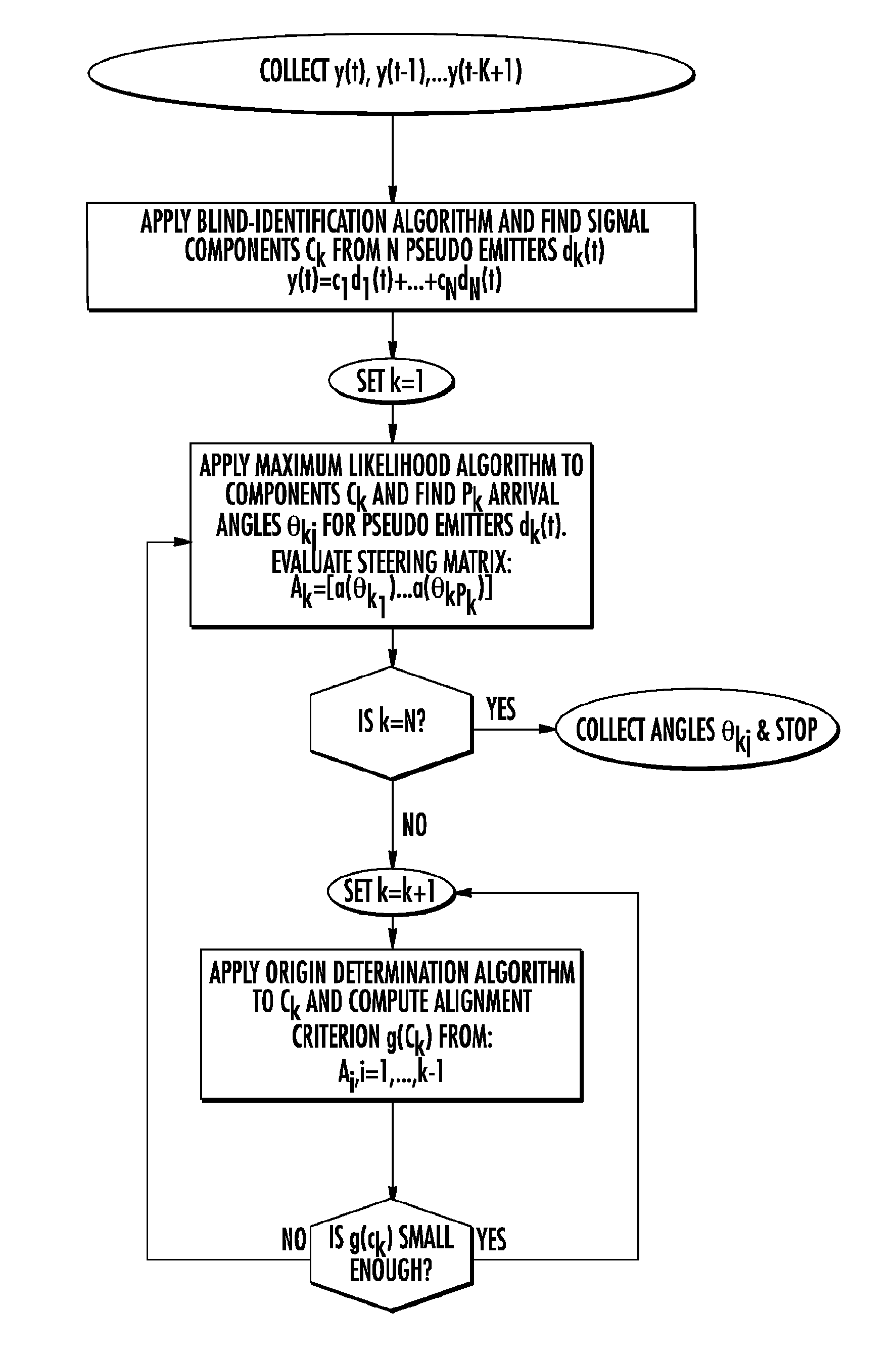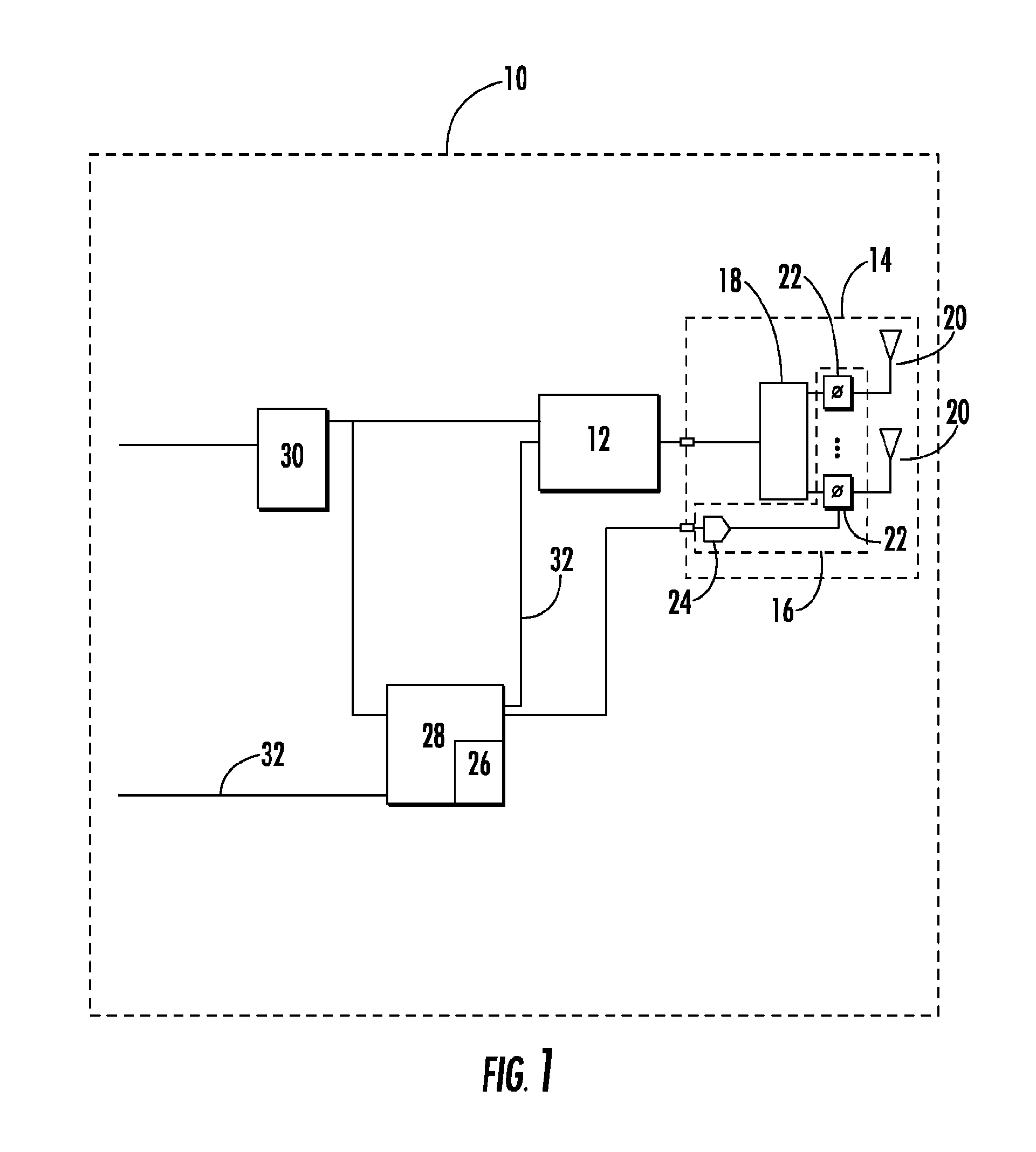Radio frequency signal acquisition and source location system
a radio frequency signal and source location technology, applied in the direction of using reradiation, burglar alarm mechanical actuation, instruments, etc., can solve the problems of inability to provide a specific location and/or direction of travel, and inability to accurately measure the associated flight time with the required resolution
- Summary
- Abstract
- Description
- Claims
- Application Information
AI Technical Summary
Benefits of technology
Problems solved by technology
Method used
Image
Examples
Embodiment Construction
[0019]The inventors have analyzed presently available signal acquisition and source location technology and recognized that a cost effective solution was not available for three dimensional signal location within a defined zone. For example with respect to RFID signals, the inventors recognized that there was a collective mindset in the signal acquisition and source location technology space that RFID technology in particular is applicable only with respect to gateway type exit / entry and or general presence detection and reporting function(s).
[0020]Further, the inventors have recognized that multiple gateway solutions for determining a general signal direction and or speed determination are unnecessarily complex, impractical and cost prohibitive.
[0021]Therefore, the inventors have developed an RF signal intelligent tracking and control system (ITCS) 5 that utilizes one or more signal acquisition and source location (SASL) module(s) 10.
[0022]As shown in FIG. 1, an exemplary SASL modu...
PUM
 Login to View More
Login to View More Abstract
Description
Claims
Application Information
 Login to View More
Login to View More - R&D
- Intellectual Property
- Life Sciences
- Materials
- Tech Scout
- Unparalleled Data Quality
- Higher Quality Content
- 60% Fewer Hallucinations
Browse by: Latest US Patents, China's latest patents, Technical Efficacy Thesaurus, Application Domain, Technology Topic, Popular Technical Reports.
© 2025 PatSnap. All rights reserved.Legal|Privacy policy|Modern Slavery Act Transparency Statement|Sitemap|About US| Contact US: help@patsnap.com



